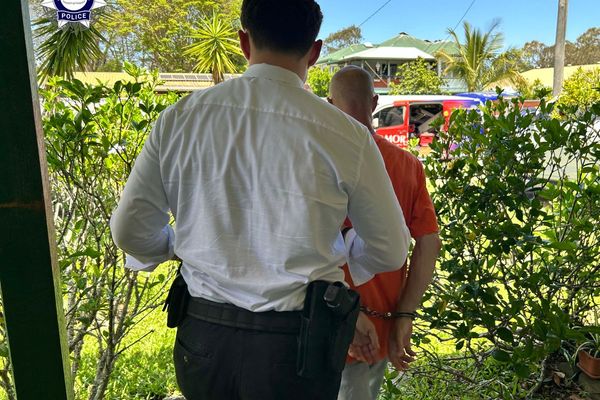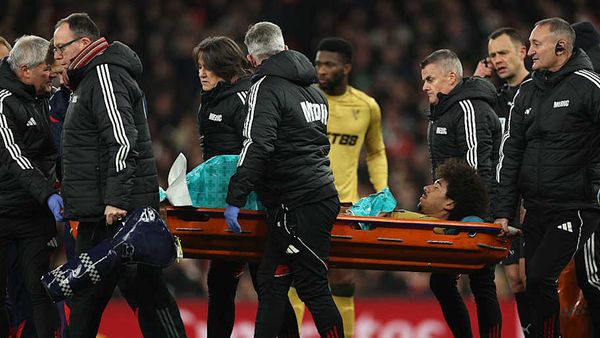When Sam Nicol started work with the Queensland police sex crimes unit, he did not expect it to be more challenging than his previous role.
He had been working as a criminal intelligence analyst with London's Metropolitan Police, focusing on the city's worst criminal gangs and violent offences.
After moving to Australia in 2011, Dr Nicol, a criminologist, said the prevalence of child sexual abuse in this country was shocking.
"I was fairly ignorant to this kind of stuff," he said.
"I was like, 'Wow, this is a much bigger problem than what I thought it was.'"
Motivated to make a difference, Dr Nicol set out to identify the common characteristics of offenders who sexually abused multiple victims over a period of time while evading authorities.
"What I was really interested in was … what is it about these people that mean they get away with it for so long?" Dr Nicol said.
Determined to learn about the risk factors for child sexual abuse to better guide prevention strategies, Dr Nicol's initial plan to interview incarcerated offenders was not possible due to the pandemic.
Instead — with approval from the Queensland Police Service — he was given access to the case files of the most prolific child sex offenders in the state.
Those case files included 70 men and their 833 victims.
'Heavy-going' research
Dr Nicol said trawling those files, with statements, court briefs and interviews, was the most challenging part of the study.
"To be honest it was really heavy going. These are all really bad people that have done some horrendous things," he said.
Offenders included in the study were non-Indigenous men, charged between 1990 and 2020, with child sexual offences against multiple victims.
The researchers divided the sample study into two groups — men who were caught quickly after offending, and those who evaded authorities over a period of time while continuing to commit crimes.
They then compared the groups against a range of characteristics, including demographics, lifestyle factors, victimisation, psychopathic traits, antisocial orientation and atypical sexual interest.
Dr Nicol said he understood it to be the first study of its kind in Queensland.
Recognising differing profiles
He said the findings showed that those who were caught quickly tended to be in lower-skilled employment or unemployed, had committed other criminal offences and could not sustain a relationship.
But the offenders who avoided detection were the opposite.
Dr Nicol said that group tended to be successful in their career, working in professional or high-skilled roles — especially in child-related occupations — and rarely interacted with police.
He said they also had a higher proportion of male and pre-pubescent victims that were usually known to them and they also showed more manipulative behaviour, conning and pathological lying.
Dr Nicol said their characteristics contributed to facilitating the sexual abuse and allowed them to "fly under the radar for years or even decades".
"They'll put themselves in multiple positions or environments where they have access to kids — such as becoming sporting coaches, teachers or other community roles — either where there are no policies or protections in place.
"Or they'll try to break down any protective barriers and make that OK, things like being in the change room or gifting kids toys or giving them lifts home."
The study through Griffith University was published in the UK Journal of Sexual Aggression in December.
Last month, a national study published in the Medical Journal of Australia revealed that one in four Australian children reported experiencing sexual abuse, according to a survey of 8,503 participants aged 16 or over.
Breaking stereotypes
Dr Nicol hopes that by raising awareness and shattering the stereotype of perpetrators, authorities and parents will be more educated, potentially intervene earlier, and ultimately reduce the prevalence of child sexual abuse.
"It shows that there's some people in our communities who you would never think would be a child sex offender or interested in kids — but they are — and getting that message out there is really important because it makes people vigilant," he said.
Child protection agency Bravehearts criminologist Carol Ronken said the study provided evidence that child sex offenders acted for different reasons, and therefore should not be lumped in one stereotype or group.
"What we know about this offending type is that perpetrators are not homogenous," she said.
"Child sex offenders offend for a vast number of reasons.
"This study has provided evidence for what many of us have observed, that is the offending of recidivist offenders can be differentiated from other offender groups, as highly organised and planned.
"Rather than offend simply because of opportunity, this offender type chooses situations, for example, jobs that will allow them to groom and offend against multiple children over periods of time and will allow their offending to remain undetected."
Ms Ronken said research like Dr Nicol's was important because "the more we know about offender type, the more targeted our prevention and treatment programs can be".
"If we can understand how and why different subtypes of child sex offenders offend, we are better placed to focus on prevention measures that reduce the likelihood of offending," she said.







